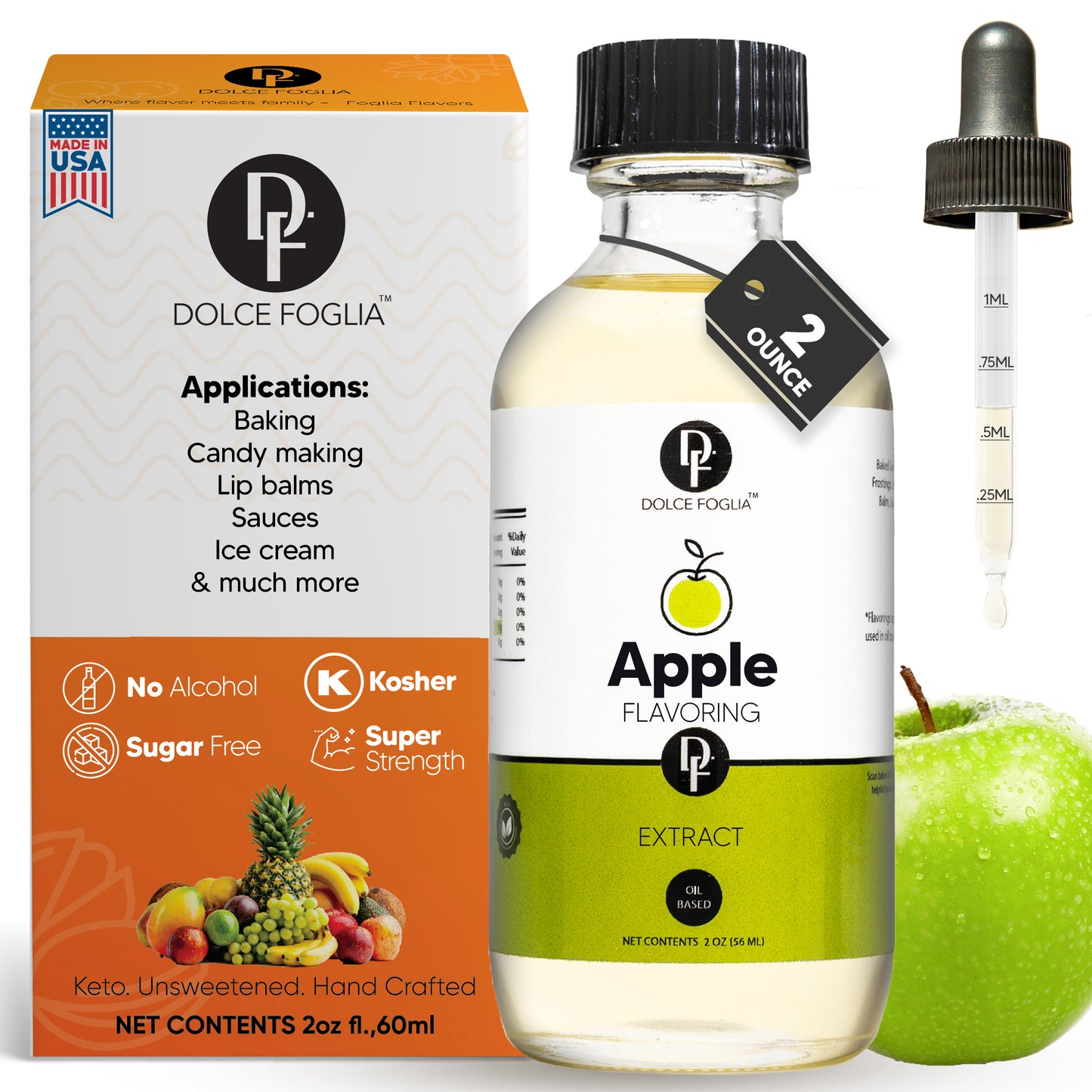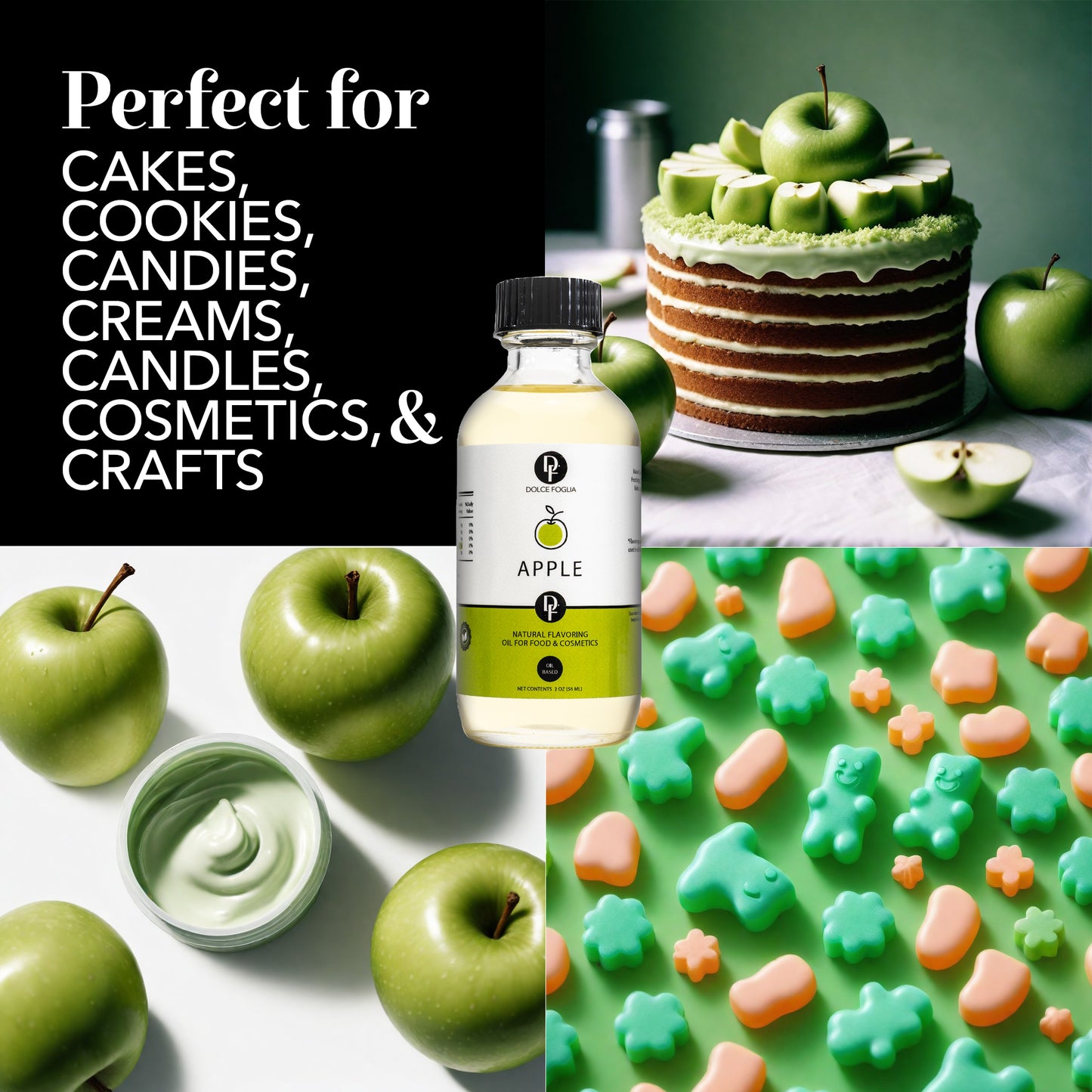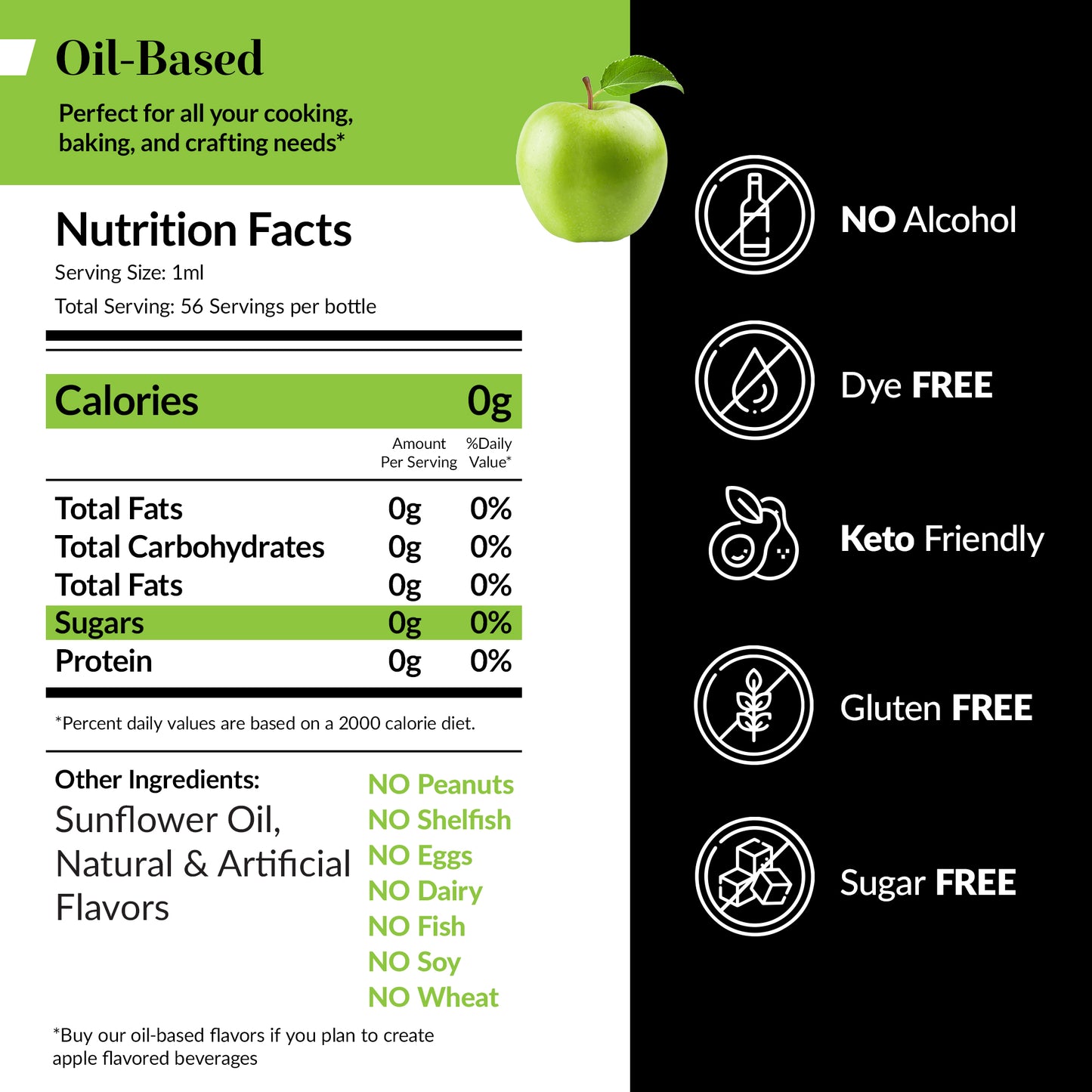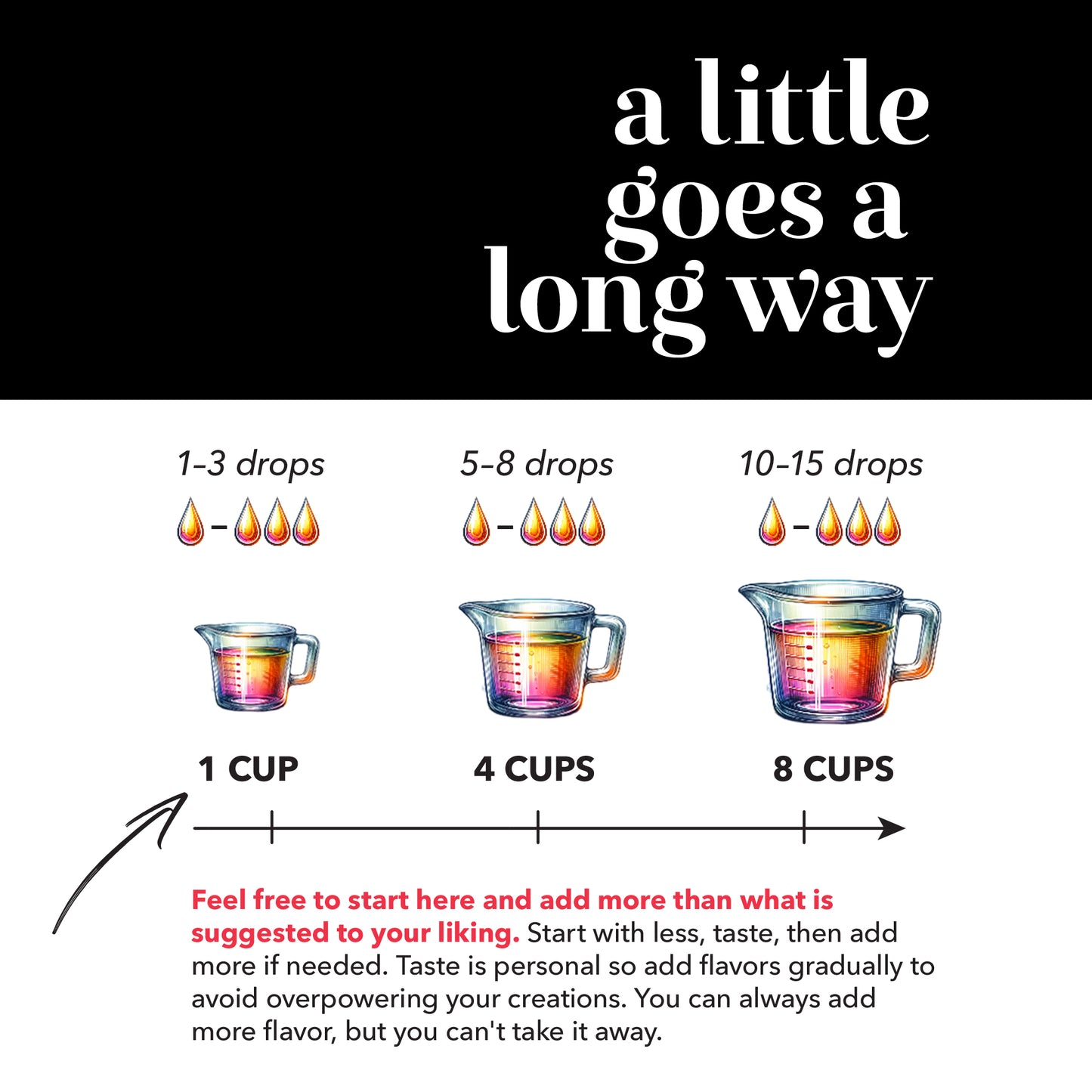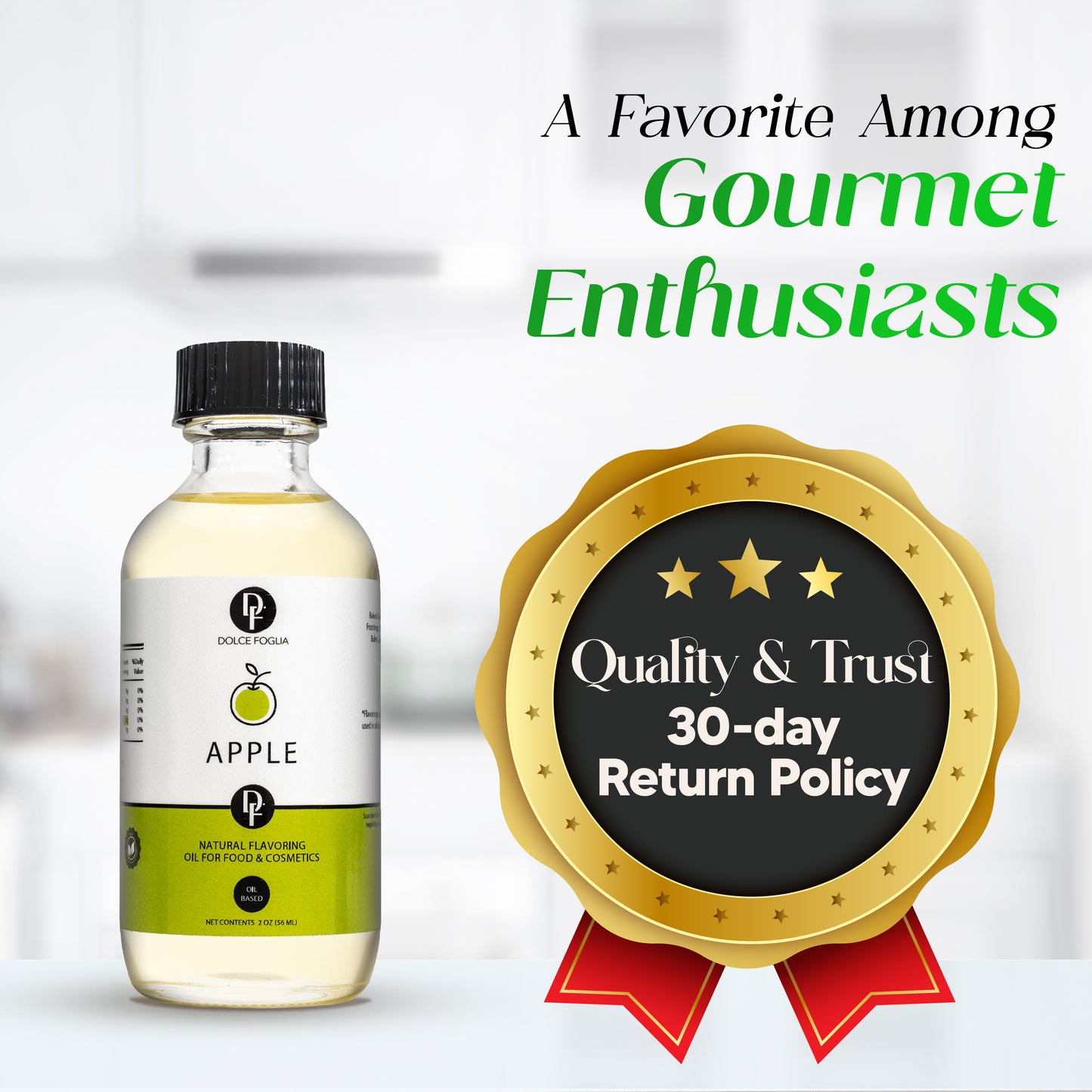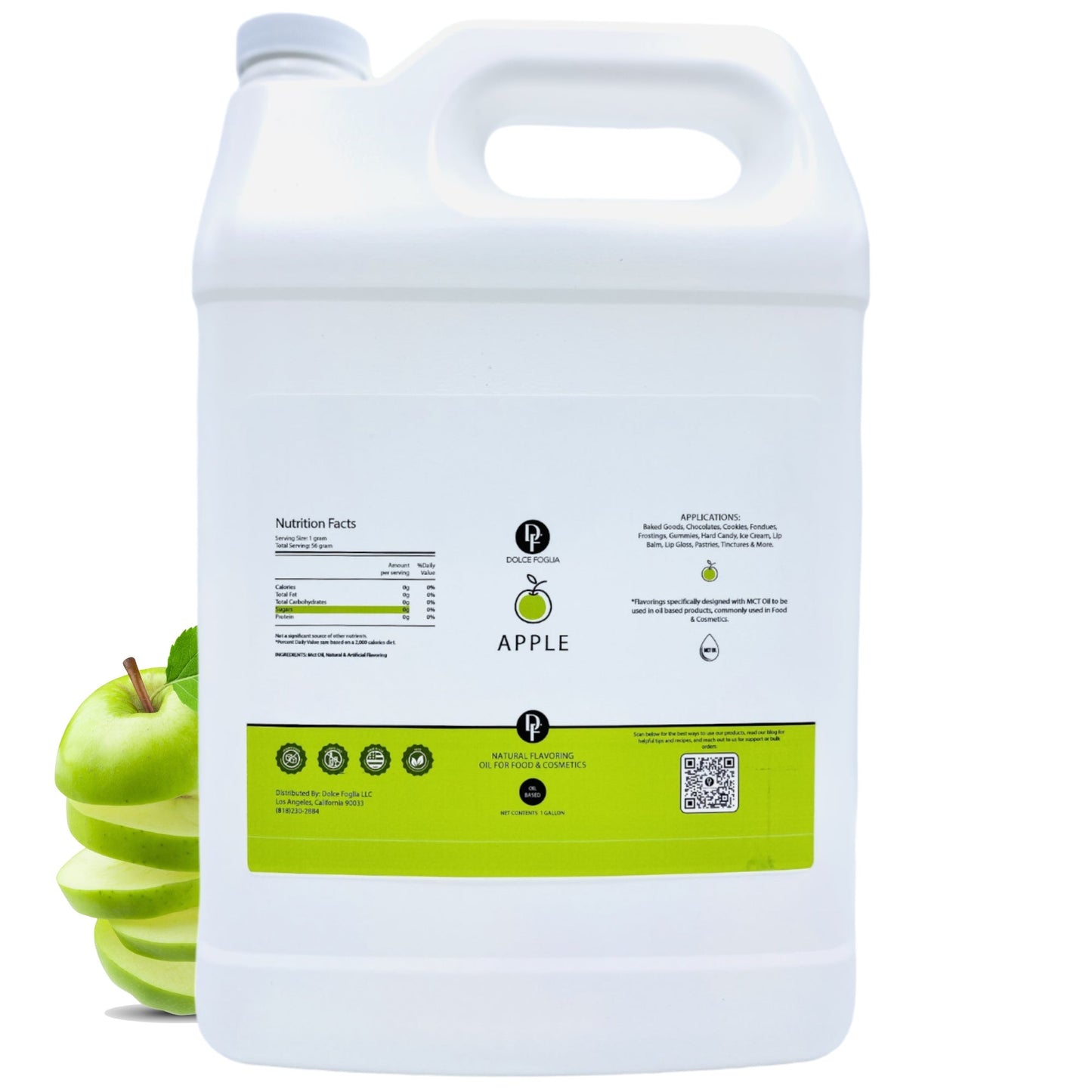Water or Oil:
WHICH FLAVORING TYPE
SHOULD I CHOOSE?
Water-soluble flavors work best in products that contain water or alcohol: beverages, icings, and fillings
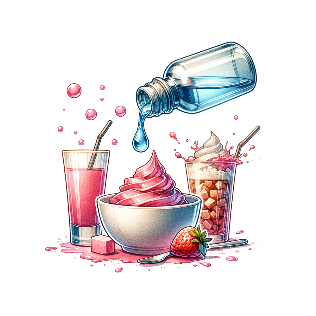
oil-soluble flavors work best in products that contain fat or oil: Cookies, cakes, and frostings
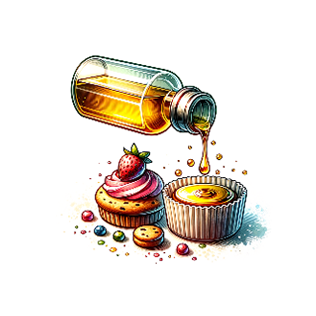
a little goes a long way

Feel free to start here and add more than what is suggested to your liking.
Start with less, taste, then add more if needed. Taste is personal so add flavors gradually to avoid overpowering your creations. You can always add more flavor, but you can't take it away.
How to Get the Most Out of Your Flavors: Common Mistakes to Avoid
Introduction to Dolce Foglia: Elevate Your Culinary Creations
In the world of culinary arts and flavor experimentation, Dolce Foglia stands out as a renowned provider of high-quality flavoring oils and water-based flavoring drops. Whether you're a seasoned chef, a passionate home baker, or a DIY enthusiast, Dolce Foglia's wide range of flavors offers endless possibilities to enhance your creations. In this article, we'll explore the exciting world of Dolce Foglia flavorings, uncovering how these premium ingredients can elevate your culinary journey to new heights. From delectable desserts to mouthwatering beverages, prepare to embark on a flavorful adventure with Dolce Foglia.
Flavoring Oil Suggested Use Rates For Various Applications:
-

Cake Batter
For a standard-sized cake batter, you can start with 1-2 teaspoons (approximately 20-40 drops) of flavoring oil. Adjust according to your taste preference.
-

Wax
When using flavoring oils in wax, it's essential to consider the type and quantity of wax you are working with. A good starting point is 1-2 teaspoons (approximately 20-40 drops) of flavoring oil per pound of wax. Adjust as needed.
-

Syrups
The amount of flavoring oil for syrups depends on the volume of the syrup and the desired intensity of flavor. Start with 1/4 to 1/2 teaspoon (approximately 5-10 drops) of flavoring oil per cup of syrup and adjust to taste.
-
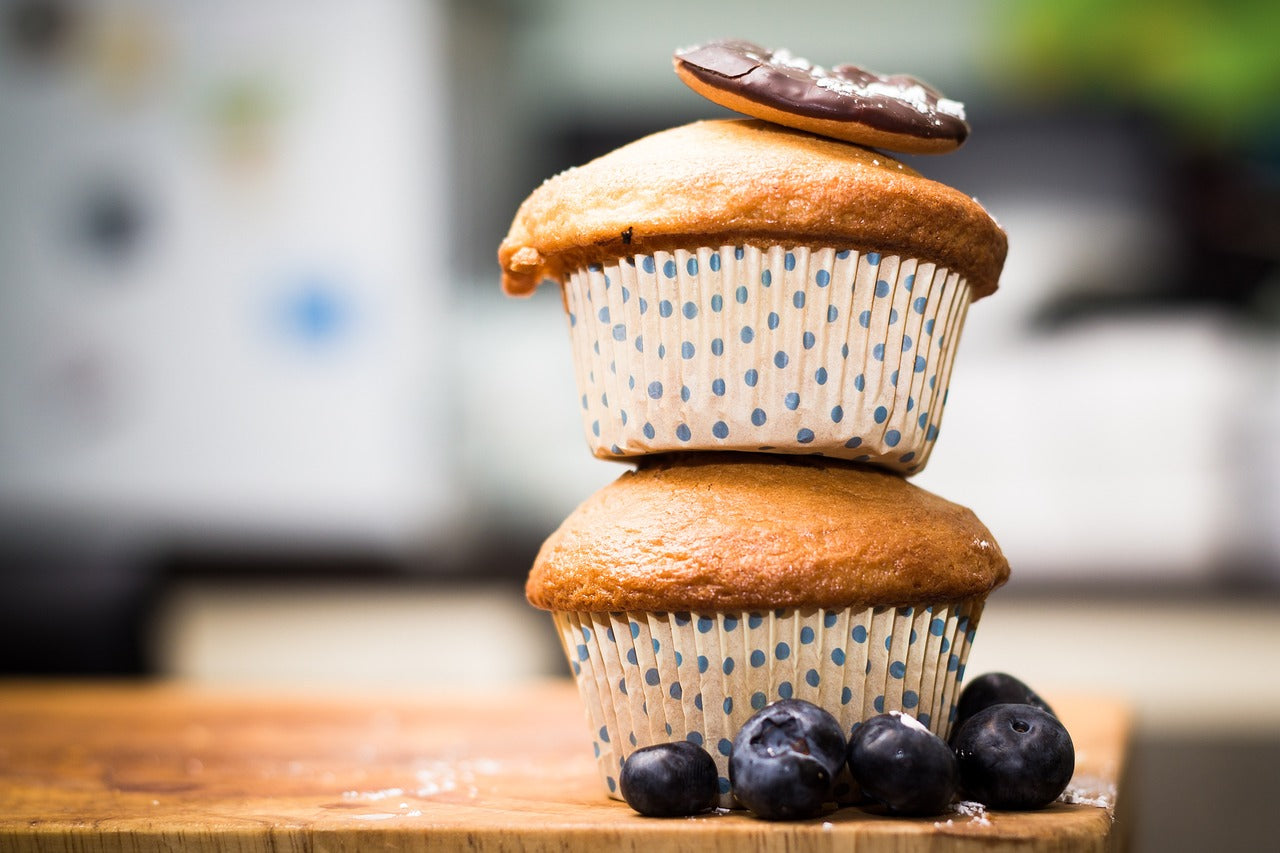
Muffins
For a standard-sized batch of muffins, you can begin with 1/2 to 1 teaspoon (approximately 10-20 drops) of flavoring oil. Adjust according to your preference and the flavor strength of the oil.
-

Pancakes
Similarly to muffins, start with 1/2 to 1 teaspoon (approximately 10-20 drops) of flavoring oil for a standard-sized batch of pancakes. Adjust based on your taste preference and the potency of the oil.
-

Gummies
For a standard-sized batch of gummies, start with about 1/4 to 1/2 teaspoon (approximately 5-10 drops) of flavoring oil. Adjust based on your taste preference and the potency of the oil.
-

Hard Candy
When making hard candy, it's essential to consider the quantity of the candy mixture and the intensity of the flavor you desire. As a starting point, use about 1/2 to 1 teaspoon (approximately 10-20 drops) of flavoring oil per pound of candy mixture. Adjust to taste.
-
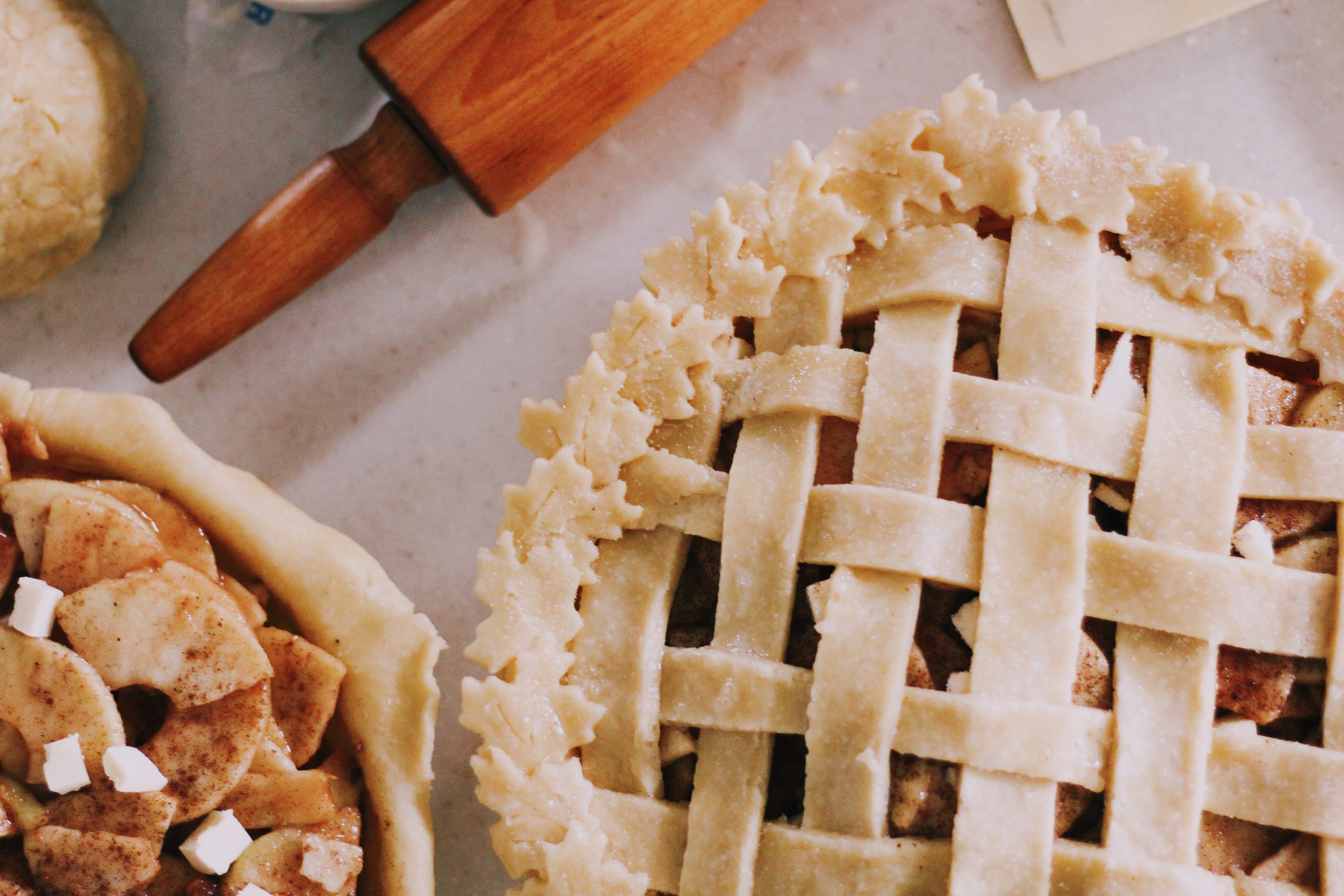
Pies
The amount of flavoring oil for pies will depend on the size and flavor intensity you want to achieve. As a general guideline, start with 1/2 to 1 teaspoon (approximately 10-20 drops) of flavoring oil for a standard-sized pie. Adjust according to your preference and the strength of the oil.
-

Frosting
The amount of flavoring oil for frosting can vary depending on the quantity and desired taste. As a starting point, use about 1/4 to 1/2 teaspoon (approximately 5-10 drops) of flavoring oil for a standard batch of frosting. Adjust to your liking.
-

Milkshakes
For a single milkshake, start with 1/4 to 1/2 teaspoon (approximately 5-10 drops) of flavoring oil. Adjust based on your taste preference and the strength of the oil.
-
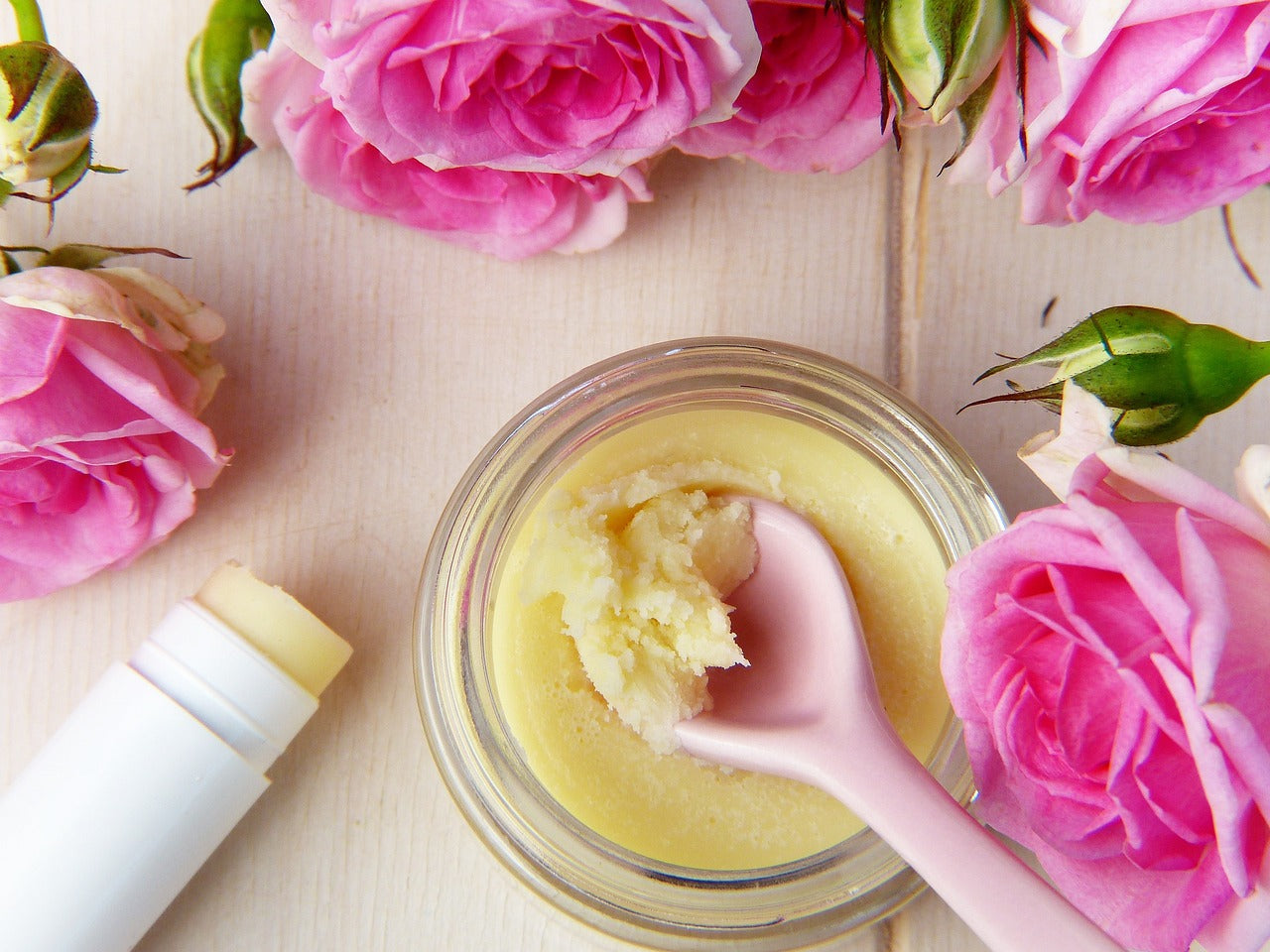
Chapstick/Lip Gloss
When making lip products, it's important to use lip-safe flavoring oils. Start with a small amount, such as 2-4 drops, and adjust according to your preference and the desired intensity of flavor.
-

Ice Cream
The amount of flavoring oil for ice cream can vary depending on the quantity and taste preference. As a general guideline, start with 1/2 to 1 teaspoon (approximately 10-20 drops) of flavoring oil per quart of ice cream base. Adjust to taste.
-

Cupcakes
For a standard-sized batch of cupcakes, begin with about 1/2 to 1 teaspoon (approximately 10-20 drops) of flavoring oil. Adjust according to your preference and the strength of the oil.
-

Cookies
For a standard-sized batch of cookies, start with 1/2 to 1 teaspoon (approximately 10-20 drops) of flavoring oil. Adjust based on personal taste preference and the strength of the oil.
-

Brownies
Similar to cookies, begin with 1/2 to 1 teaspoon (approximately 10-20 drops) of flavoring oil for a standard-sized batch of brownies. Adjust to taste.
-

Fudge
Use about 1/2 to 1 teaspoon (approximately 10-20 drops) of flavoring oil per batch of fudge. Adjust based on personal preference and the intensity of flavor desired.
-
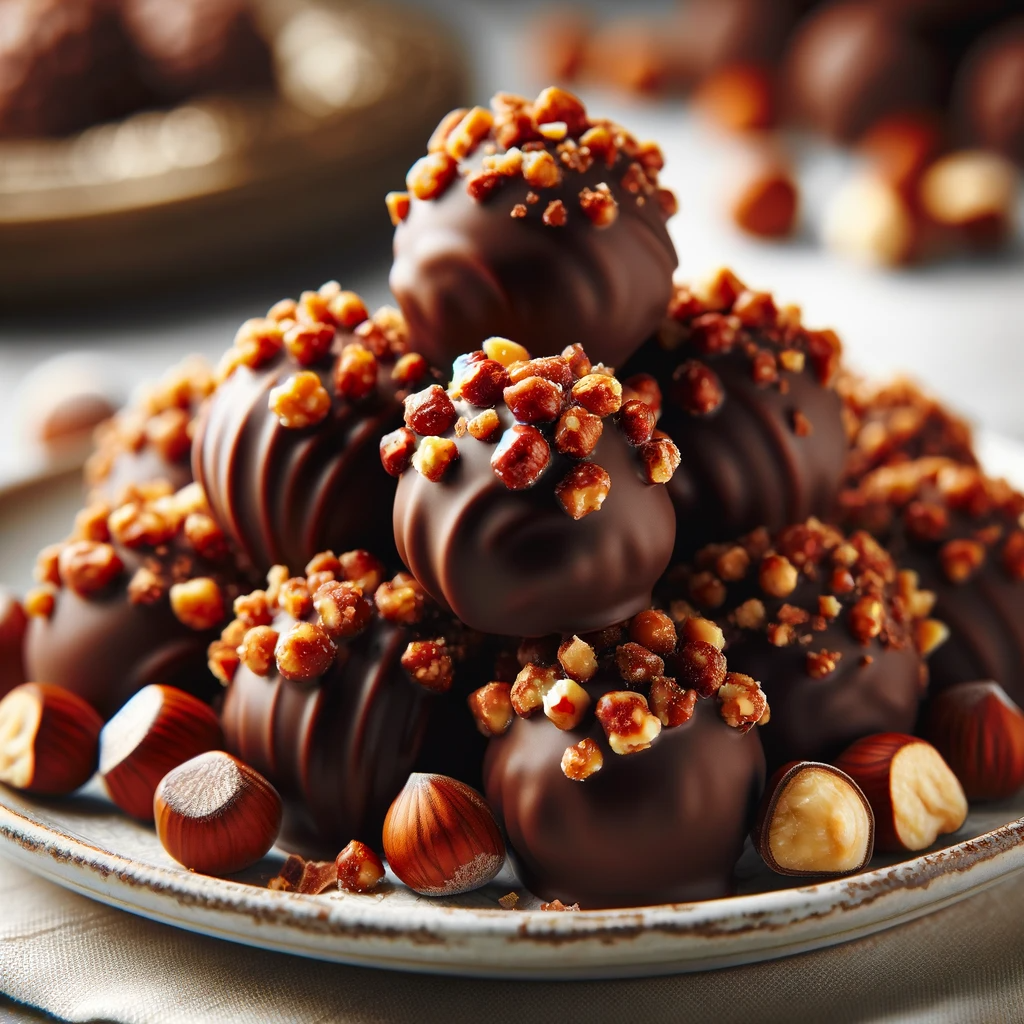
Truffles
Start with approximately 1/4 to 1/2 teaspoon (approximately 5-10 drops) of flavoring oil per batch of truffles. Adjust based on taste preference and the potency of the oil.
-

Caramel/Candy Apples
Use approximately 1/2 to 1 teaspoon (approximately 10-20 drops) of flavoring oil per batch of caramel or candy apple coating. Adjust according to personal preference and the strength of the oil.
-

Chocolates
The amount of flavoring oil for chocolates can vary depending on the size of the batch and the desired taste intensity. As a starting point, use about 1/4 to 1/2 teaspoon (approximately 5-10 drops) of flavoring oil per cup of chocolate. Adjust based on personal preference and the flavoring oil's strength.
-
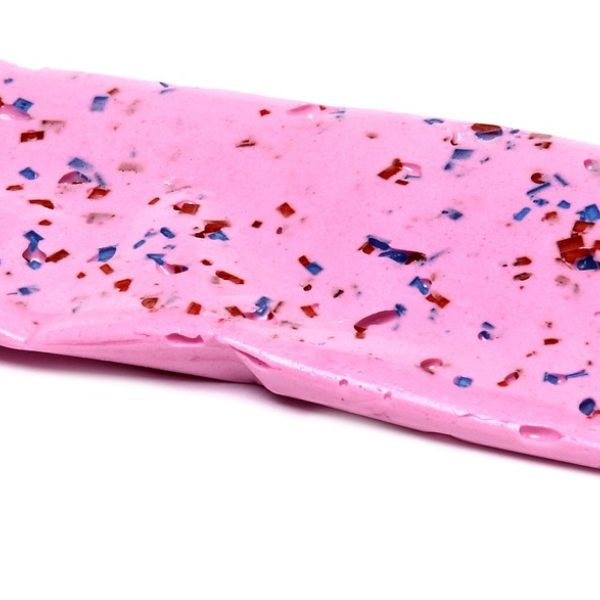
Taffy
Begin with approximately 1/2 to 1 teaspoon (approximately 10-20 drops) of flavoring oil per batch of taffy. Adjust based on personal preference and the desired flavor strength.
-

Lollipops
Use about 1/2 to 1 teaspoon (approximately 10-20 drops) of flavoring oil per batch of lollipops. Adjust according to taste preference and the potency of the flavoring oil.
Water Based Flavoring Suggested Use Rates For Various Applications
-
Beverages (Water, Tea, Coffee)
Start with 1/4 to 1/2 teaspoon (1.25-2.5 ml or approximately 25-50 drops) of water-based flavor per 8-ounce (240 ml) serving.
Adjust the amount based on personal preference and desired flavor intensity. -
Sparkling Water
Begin with 1/8 to 1/4 teaspoon (0.63-1.25 ml or approximately 12-25 drops) of water-based flavor per 8-ounce (240 ml) serving.
Adjust to taste, keeping in mind that the effervescence of sparkling water can amplify flavors. -
Homemade Soda
Use approximately 1/2 to 1 teaspoon (2.5-5 ml or approximately 50-100 drops) of water-based flavor per 8-ounce (240 ml) serving of homemade soda.
Adjust based on personal preference and the desired intensity of flavor. -
Ice Pops
Add 1 to 2 teaspoons (5-10 ml or approximately 100-200 drops) of water-based flavor per cup (240 ml) of ice pop mixture.
Adjust to taste, considering that freezing can diminish the intensity of flavors. -
Gelatin Desserts
Use about 1 to 2 teaspoons (5-10 ml or approximately 100-200 drops) of water-based flavor per 2 cups (480 ml) of gelatin mixture.
Adjust based on personal preference and the desired strength of flavor. -
Frosting/Icing
Start with 1/2 to 1 teaspoon (2.5-5 ml or approximately 50-100 drops) of water-based flavor per cup (240 ml) of frosting/icing.
Adjust according to taste, keeping in mind the sweetness and consistency of the frosting. -
Sauces and Syrups
Add 1 to 2 teaspoons (5-10 ml or approximately 100-200 drops) of water-based flavor per cup (240 ml) of sauce or syrup.
Adjust based on personal preference and the desired flavor intensity. -
Yogurt and Smoothies
Begin with 1/2 to 1 teaspoon (2.5-5 ml or approximately 50-100 drops) of water-based flavor per cup (240 ml) of yogurt or smoothie mixture.
Adjust according to taste and the desired strength of flavor. -
Ice Cream
The amount of flavoring oil for ice cream can vary depending on the quantity and taste preference. As a general guideline, start with 1/2 to 1 teaspoon (approximately 10-20 drops) of flavoring oil per quart of ice cream base.
Tips for using flavors and extracts:
Choose the right type of flavoring for your recipe.
Flavor oils and extracts come in two types: oil soluble and water soluble. Oil soluble flavors work best in products that contain fat or oil, like cookies, cakes, and frostings. Water soluble flavors, on the other hand, are better suited for products that contain water or alcohol, like beverages, icings, and fillings. If you use the wrong type of flavoring, you may not get much flavor in your finished product.
Follow the recommended usage rates.
Each flavoring has a recommended usage rate that will give you the best balance of flavor. It's important to follow these usage rates to avoid overpowering or artificial-tasting flavors. For example, Dolce Foglia suggests using 0.30 - 0.50% of their apple flavor oil in candies, or approximately 0.0015 - 0.0025 teaspoons per 100 grams of your recipe.
Experiment with different flavors.
There are so many delicious flavors to choose from, and the possibilities are endless when it comes to incorporating them into your baking. Here are some ideas for using different flavors in your recipes:
Add a touch of cherry extract to your chocolate cake batter for a delicious twist.
Mix a little raspberry flavor oil into your vanilla frosting for a fruity touch.
Stir a few drops of peppermint extract into your chocolate chip cookie dough for a refreshing twist.
Mix a little mango flavor oil into your pancake batter for a tropical twist.
Don't drink the flavor oils and extracts!
Although they may smell delicious, flavor oils and extracts are not meant to be consumed on their own. They are meant to be mixed into recipes or formulas to add flavor. Drinking them can lead to health issues, so make sure to keep them out of reach of little ones and stick to using them in your baking.
We hope these tips help you get the most out of your flavor oils and extracts and create some amazing treats! Happy baking!
What are some mistakes to avoid using water flavoring drops?
When using water flavoring drops, there are a few mistakes to avoid in order to ensure that you achieve the desired flavor and texture in your drink. Here are a few common mistakes to avoid:
- Using too much: Water flavoring drops are highly concentrated, and a little goes a long way. Start with a small amount and add more to taste. Using too much can overpower the other flavors in your drink and make it inedible.
- Not storing properly: Water flavoring drops should be stored in a cool, dark place, away from heat and light. Failure to store them properly can cause them to lose their flavor.
- Not checking for compatibility: Some water flavoring drops may not be compatible with certain types of products or ingredients. It's important to check the manufacturer's recommendations or consult with a professional to ensure that the flavoring you choose is suitable for your intended use.
- Not measuring: Not measuring the amount of water flavoring drops you are using, can lead to the drink being too strong or too weak in flavor.
- Using expired flavoring drops: Like most food products, water flavoring drops have a shelf life and can lose their potency over time. Be sure to check the expiration date and discard any flavoring that has expired.
- Not considering the type of water: Some flavoring drops are not suitable for some types of water, such as hard water or alkaline water. It's important to check if the flavoring drops you are using are suitable for the type of water you are using.
By keeping these mistakes in mind, you can ensure that you use water flavoring drops correctly and achieve the desired flavor and texture in your drink.
What are the applications of flavoring oils?
Flavoring oils are versatile ingredients that can be used in a variety of applications. Here are some of the most common uses of flavoring oils:
- Cooking: Flavoring oils can be used to add flavor to a variety of dishes, such as marinades, dressings, sauces, soups, stews, and more.
- Baking: Flavoring oils can be used to add flavor to baked goods, such as cakes, cookies, breads, and pastries.
- Drinks: Flavoring oils can be used to add flavor to beverages, such as coffee, tea, cocktails, and smoothies.
- Desserts: Flavoring oils can be used to add flavor to desserts, such as ice cream, frozen yogurt, and puddings.
- Candies and Confections: Flavoring oils can be used to add flavor to candy and confections, such as hard candy, gummies, and chocolates.
- Aromatherapy: Flavoring oils can be used in aromatherapy, added to diffusers, candles, and lotions to create a pleasant aroma.
- Beauty and Personal Care: Some flavoring oils can be used in beauty and personal care products, such as soaps, lotions, and scrubs.
- Cleaning products: Some flavoring oils can be used as a natural fragrance in cleaning products.
What are some mistakes to avoid using flavoring oils?
When using flavoring oils, there are a few mistakes to avoid in order to ensure that you achieve the desired flavor and texture in your food and drink. Here are a few common mistakes to avoid:
- Using too much: flavoring oils are highly concentrated, and a little goes a long way. Start with a small amount and add more to taste. Using too much can overpower the other flavors in your dish and make it inedible.
- Not storing properly: flavoring oils should be stored in a cool, dark place, away from heat and light. Failure to store them properly can cause them to go rancid and lose their flavor.
- Not checking for compatibility: Some flavoring oils may not be compatible with certain types of products or ingredients. It's important to check the manufacturer's recommendations or consult with a professional to ensure that the flavoring you choose is suitable for your intended use.
- Not measuring: Not measuring the amount of flavoring oil you are using, can lead to the dish being too strong or too weak in flavor.
- Using expired flavoring oils: Like most food products, flavoring oils have a shelf life and can lose their potency over time. Be sure to check the expiration date and discard any flavoring that has expired.
By keeping these mistakes in mind, you can ensure that you use flavoring oils correctly and achieve the desired flavor and texture in your food and drink.
Flavoring Oil Recipes For Varying Applications
-
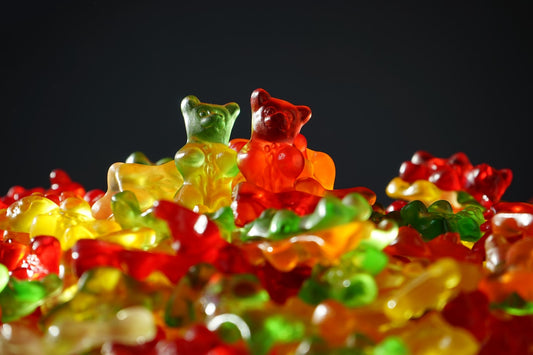
How to make real gummy bears - Shelf-Stable gum...
I often hear, is there really a perfect gummy bear recipe? The answer is a resounding YES! The beauty of this recipe is that just like any other recipe, you...
How to make real gummy bears - Shelf-Stable gum...
I often hear, is there really a perfect gummy bear recipe? The...
-
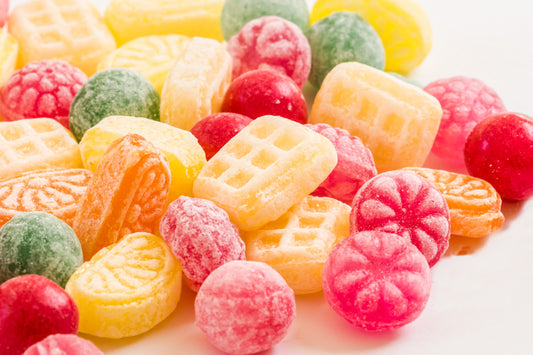
Homemade Candy Making - Hard Candy Recipe
A great new and easy skill to pick with your kids or friends is learning how to do candy making at home.
-
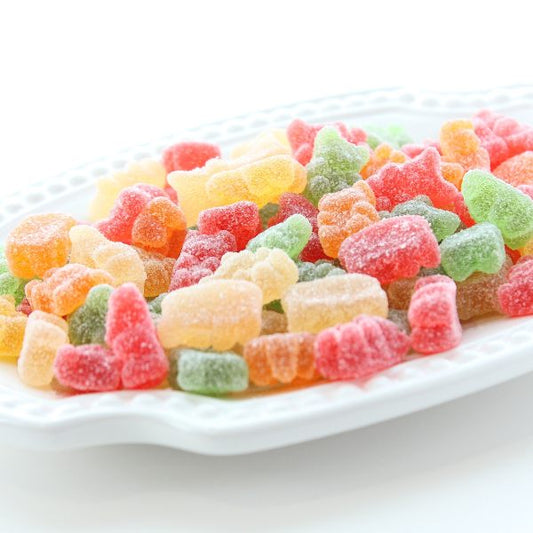
Deliciously Vegan: A Step-by-Step Guide to Maki...
Vegan gummy bears have gained immense popularity in recent years, offering a delightful and guilt-free treat for those following a plant-based lifestyle. Made without gelatin or any animal-derived ingredients, these...
Deliciously Vegan: A Step-by-Step Guide to Maki...
Vegan gummy bears have gained immense popularity in recent years, offering a...
-
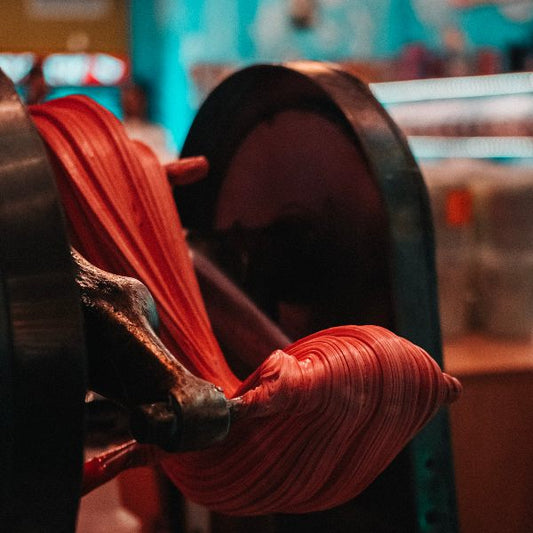
Homemade Laffy Taffy recipe
In this article we are going to cover everything about how to make salt water taffy. First off, let's discuss what salt water taffy is. What is salt water taffy?...
-

Low Carb Keto Friendly Pancakes: Ultimate Guide
Every morning for the last 3 weeks I have been making low carb keto friendly pancakes and they're absolutely delicious.I can't wait to share my KETO PANCAKES recipe with you!...
Low Carb Keto Friendly Pancakes: Ultimate Guide
Every morning for the last 3 weeks I have been making low...
-
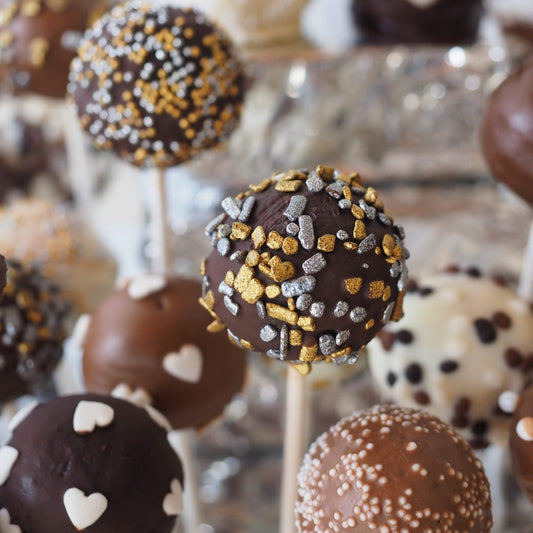
Transform your chocolate game with Dolce Foglia...
Chocolate is undoubtedly one of the world's sweetest pleasures, and Dolce Foglia flavoring takes chocolates to another level. Dolce Foglia flavoring adds fruity, tangy, and sweet flavors to your chocolates,...
Transform your chocolate game with Dolce Foglia...
Chocolate is undoubtedly one of the world's sweetest pleasures, and Dolce Foglia...
-

Make Your Homemade Chapstick Even More Deliciou...
If you prefer not to use beeswax or you just don't have it on hand, you can still easily make sweet lip balm or gloss! In this article we're going to discuss...
Make Your Homemade Chapstick Even More Deliciou...
If you prefer not to use beeswax or you just don't have...
-
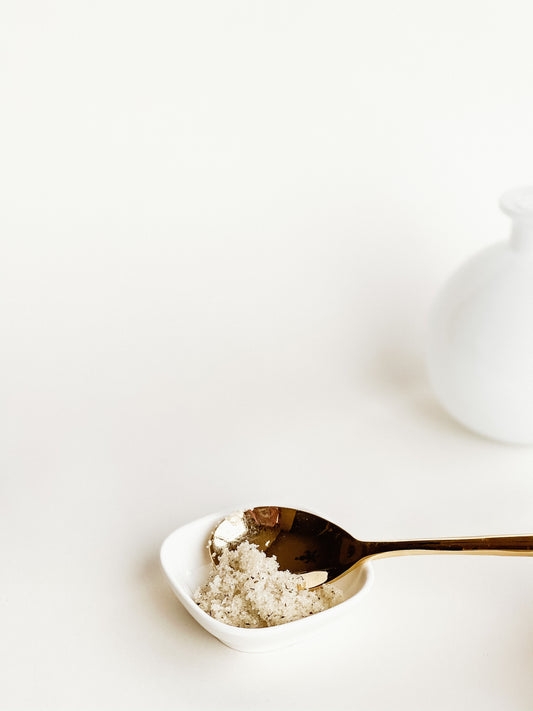
DIY Sugar Scrub with Dolce Foglia Flavoring Oil...
If you're looking to elevate your homemade sugar scrub game, consider incorporating Dolce Foglia flavoring oils. These oils are specifically designed for use in food and cosmetic applications, making them...
DIY Sugar Scrub with Dolce Foglia Flavoring Oil...
If you're looking to elevate your homemade sugar scrub game, consider incorporating...
-
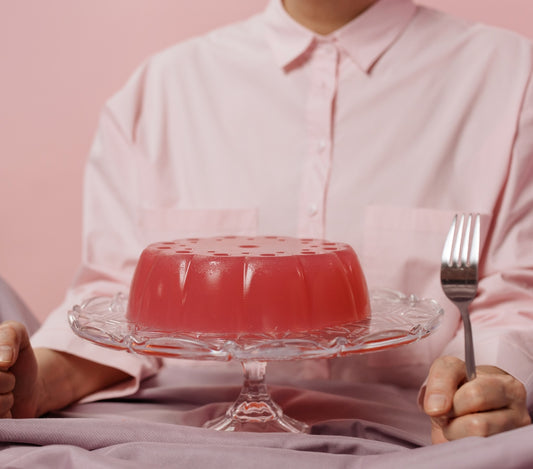
Add a Flavorful Twist to Jello with Dolce Fogli...
Jello is a classic dessert that's easy to make and always a crowd-pleaser. But why settle for plain old Jello when you can make it with delicious Dolce Foglia flavors?...
Add a Flavorful Twist to Jello with Dolce Fogli...
Jello is a classic dessert that's easy to make and always a...
-

Upgrade Your Chocolate Ganache with Dolce Fogli...
Ganache is a luxurious chocolate filling or topping that's often used in desserts like truffles, cakes, and cupcakes. But why settle for plain old ganache when you can add delicious...
Upgrade Your Chocolate Ganache with Dolce Fogli...
Ganache is a luxurious chocolate filling or topping that's often used in...
-
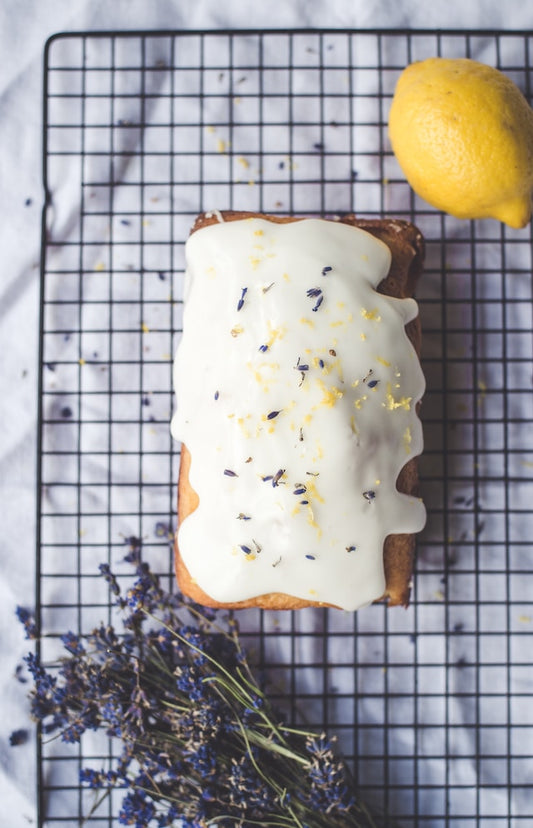
Take Your Lemon Pound Cake to the Next Level wi...
Lemon pound cake is a classic dessert that's perfect for any occasion, from afternoon tea to a summer barbecue. But why settle for plain old lemon pound cake when you...
Take Your Lemon Pound Cake to the Next Level wi...
Lemon pound cake is a classic dessert that's perfect for any occasion,...
-
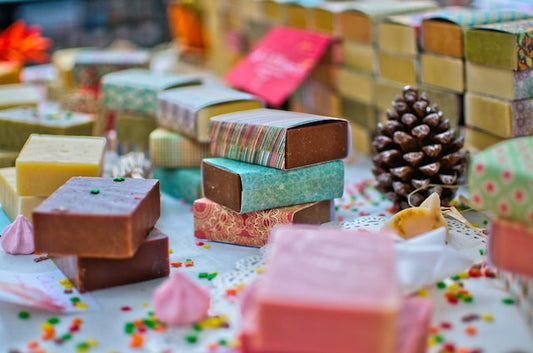
A Beginner's Guide to Using Dolce Foglia Flavor...
Making your own candles and soaps is a fun and rewarding hobby that allows you to create unique and personalized products. One way to add a touch of aroma to...
A Beginner's Guide to Using Dolce Foglia Flavor...
Making your own candles and soaps is a fun and rewarding hobby...
Flavoring Oil Recipes:
-
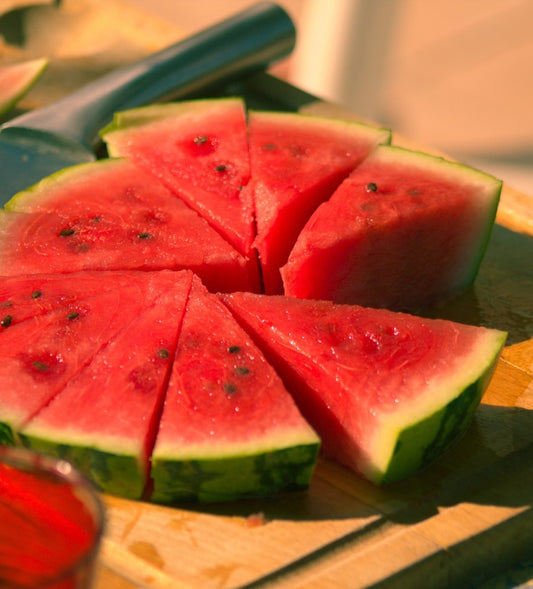
5 Delicious Watermelon Recipes with Dolce Fogli...
Summertime is the perfect time to enjoy all the delicious fruits the season has to offer, and one of those fruits is watermelon. But what do you do with all...
5 Delicious Watermelon Recipes with Dolce Fogli...
Summertime is the perfect time to enjoy all the delicious fruits the...
-
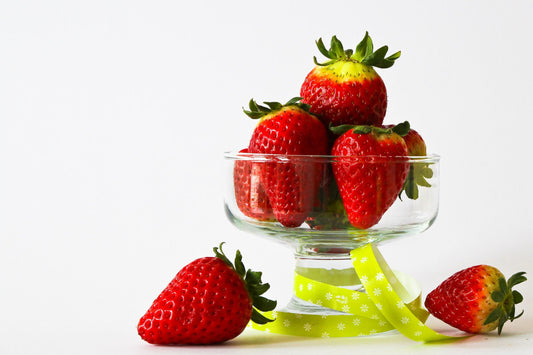
-
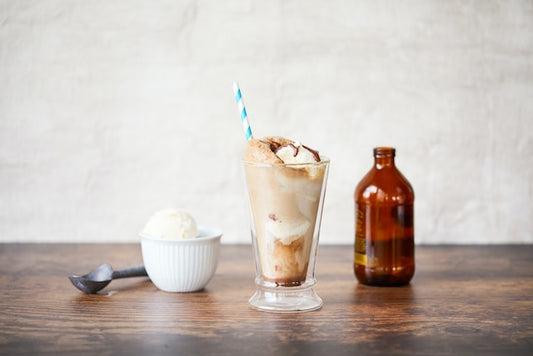
4 Unique Recipes Using Root Beer Flavoring Oil ...
Root beer is a classic American soda that has been around for over a century. Its unique flavor comes from a combination of vanilla, wintergreen, licorice, and other herbs and...
4 Unique Recipes Using Root Beer Flavoring Oil ...
Root beer is a classic American soda that has been around for...
-
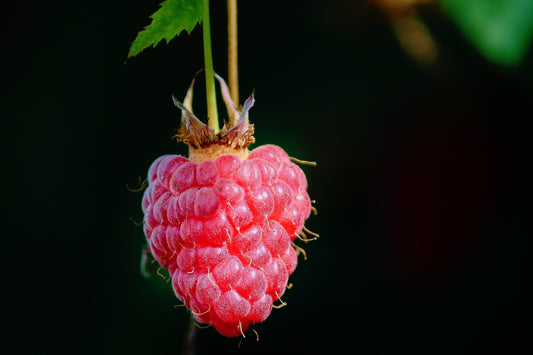
5 Delicious and Creative Raspberry Recipes usin...
In this article, we are going to cover a variety of raspberry desserts ranging from raspberry pie recipes to raspberry ice cream recipes. Hoping this will be a one stop show...
5 Delicious and Creative Raspberry Recipes usin...
In this article, we are going to cover a variety of raspberry...
-

5 Delicious Ways to Use Pistachio Flavoring
Did you know that pistachios are actually berries? They grow on small, bushy trees and are native to Central Asia and the Middle East. The name "pistachio" comes from the...
5 Delicious Ways to Use Pistachio Flavoring
Did you know that pistachios are actually berries? They grow on small,...
-

Peachylicious: 3 Unique and Delicious Recipes U...
Peaches are one of the most delicious and juicy fruits of the summer season. If you're looking for a unique way to incorporate peach flavors into your recipes, look no...
Peachylicious: 3 Unique and Delicious Recipes U...
Peaches are one of the most delicious and juicy fruits of the...
-

3 Delicious Recipes with Passion Fruit Flavorin...
Passion fruit is a tropical fruit with a sweet and tangy flavor that can add a unique twist to your cooking. If you love this exotic taste, you can easily...
3 Delicious Recipes with Passion Fruit Flavorin...
Passion fruit is a tropical fruit with a sweet and tangy flavor...
-
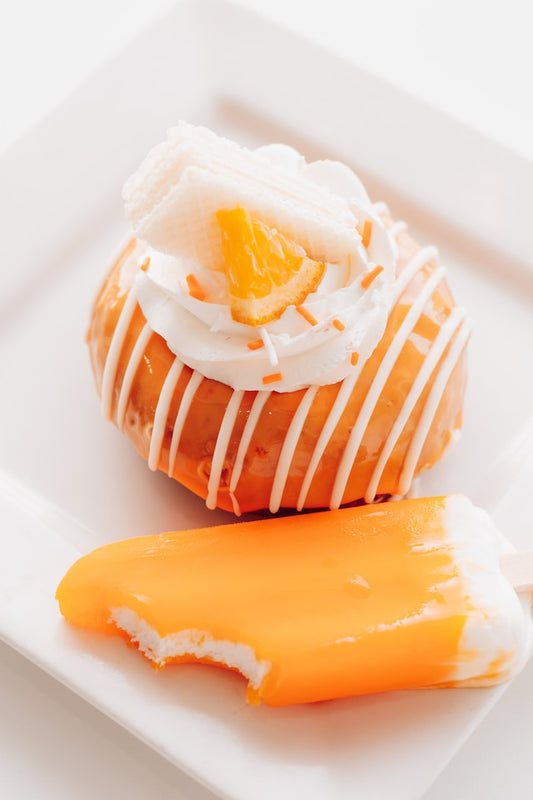
3 Delicious Recipes with Orange Creamsicle Flav...
Orange creamsicle is a classic flavor that brings back memories of summer and childhood. If you love the combination of orange and vanilla, you can easily incorporate it into your...
3 Delicious Recipes with Orange Creamsicle Flav...
Orange creamsicle is a classic flavor that brings back memories of summer...
-
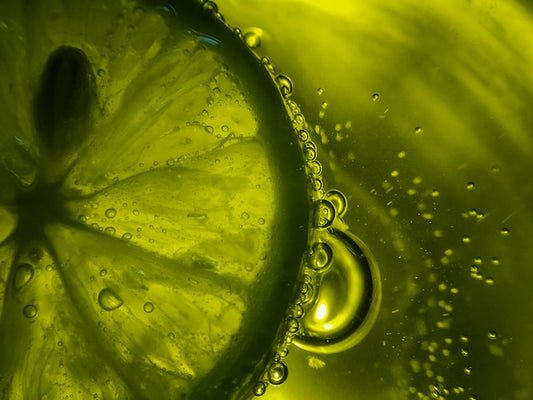
Lime is the New Lemon: 3 Unique and Easy Recipe...
Move over lemon, there's a new citrus in town! Lime flavoring oil is a fun and versatile ingredient to add some zest to your recipes. In this blog, we share...
Lime is the New Lemon: 3 Unique and Easy Recipe...
Move over lemon, there's a new citrus in town! Lime flavoring oil...
-
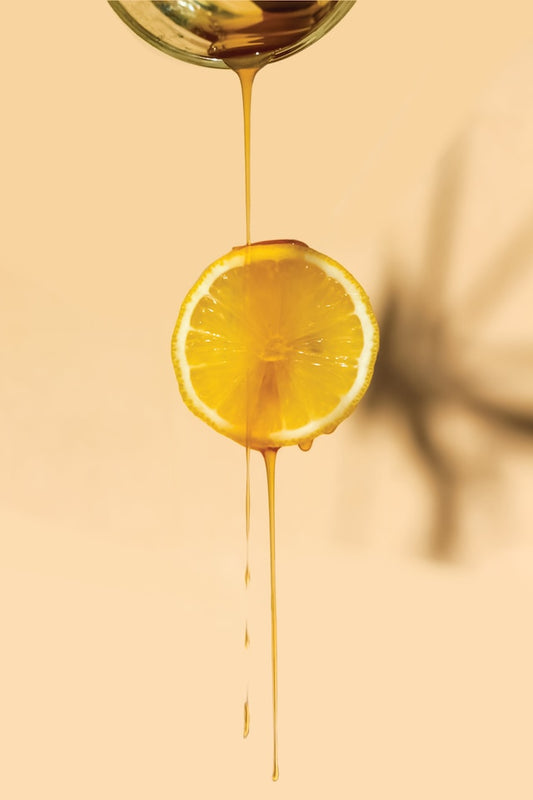
Lemon Up Your Life: 4 Unique Recipes Using Lemo...
Looking for a way to add a burst of sunshine to your recipes? Lemon flavoring oil is the perfect ingredient to brighten up any dish! In this blog, we share...
Lemon Up Your Life: 4 Unique Recipes Using Lemo...
Looking for a way to add a burst of sunshine to your...
-
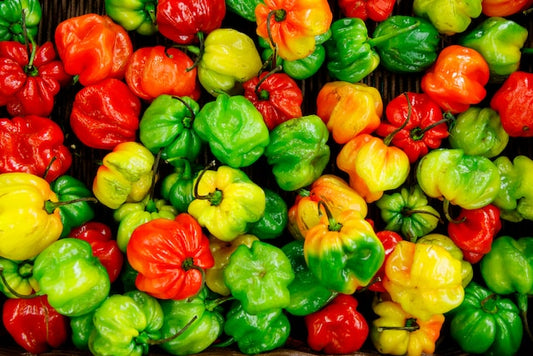
Spice Up Your Life: 4 Unique Recipes Using Haba...
Recipe 1: Habanero Spiced Nuts Crunchy Heat: Habanero Spiced Nuts That Will Make Your Mouth Water Ingredients: 2 cups mixed nuts 2 tbsp olive oil 1 tsp salt 1 tsp...
Spice Up Your Life: 4 Unique Recipes Using Haba...
Recipe 1: Habanero Spiced Nuts Crunchy Heat: Habanero Spiced Nuts That Will...
-

Get Your Grape On: 3 Delicious and Unique Recip...
Grape flavoring oil is a versatile ingredient that can add a delicious grape twist to any recipe. In this blog post, we share three unique and tasty recipes that use...
Get Your Grape On: 3 Delicious and Unique Recip...
Grape flavoring oil is a versatile ingredient that can add a delicious...
-
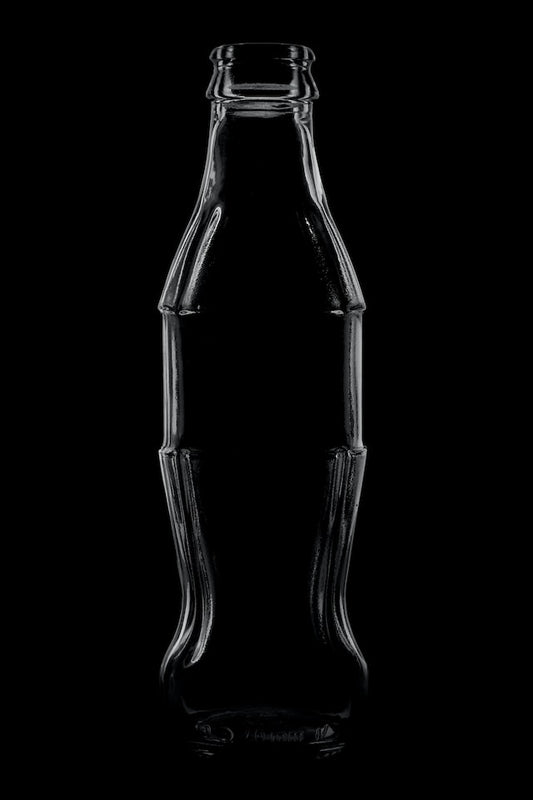
Savor the Flavor: 4 Unique Recipes Using Cola F...
Cola is a beloved soda flavor that has been popular for over a century. Its distinctive taste comes from a combination of cinnamon, vanilla, and citrus oils. Cola flavoring oil...
Savor the Flavor: 4 Unique Recipes Using Cola F...
Cola is a beloved soda flavor that has been popular for over...
-

Cherrylicious: 3 Unique and Tasty Recipes Using...
Cherry flavoring oil is a delicious and versatile ingredient that can add a sweet and fruity twist to any dish. In this blog post, we share three unique and tasty...
Cherrylicious: 3 Unique and Tasty Recipes Using...
Cherry flavoring oil is a delicious and versatile ingredient that can add...
-
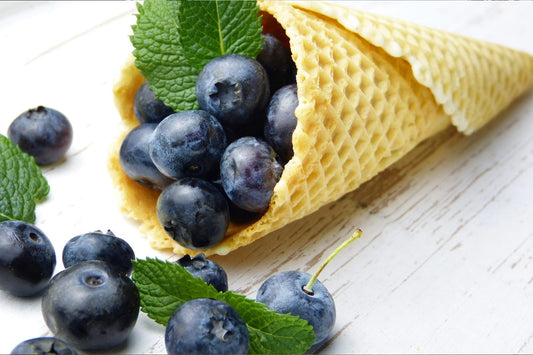
7 Blueberry Recipes Using Dolce Foglia Blueberr...
In this article, we are going to cover a variety of blueberry desserts ranging from blueberry cake recipes to a blueberry ice cream recipe. Shop our blueberry concentrate now that's only a click away. 1.Blueberry Pie Recipe Blueberries...
7 Blueberry Recipes Using Dolce Foglia Blueberr...
In this article, we are going to cover a variety of blueberry desserts ranging...
-

3 Delicious Recipes with Blue Raspberry Flavori...
Blue raspberry is a popular flavor for candies, drinks, and desserts. If you love this sweet and tangy taste, you can easily incorporate it into your cooking with blue raspberry...
3 Delicious Recipes with Blue Raspberry Flavori...
Blue raspberry is a popular flavor for candies, drinks, and desserts. If...
-
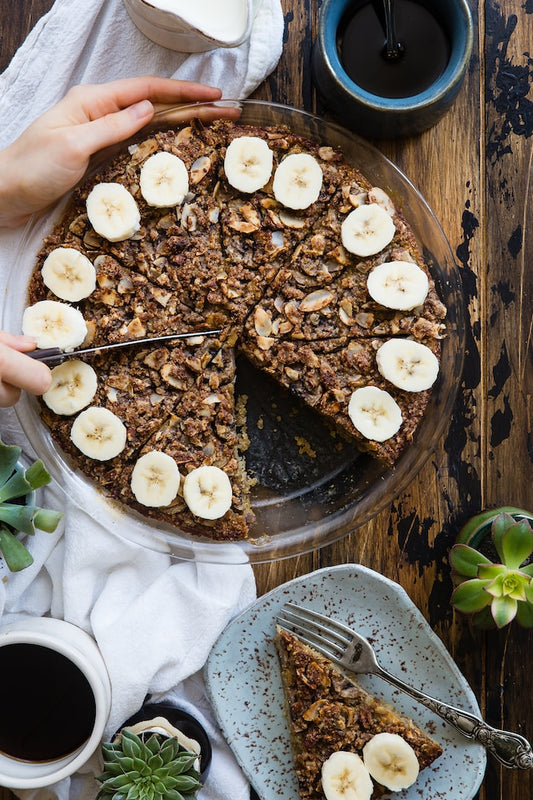
Going Bananas: 3 Unique and Tasty Recipes Using...
Banana flavoring oil is a versatile ingredient that can add a delicious banana twist to any recipe. In this blog post, we share three unique and tasty recipes that use...
Going Bananas: 3 Unique and Tasty Recipes Using...
Banana flavoring oil is a versatile ingredient that can add a delicious...
-
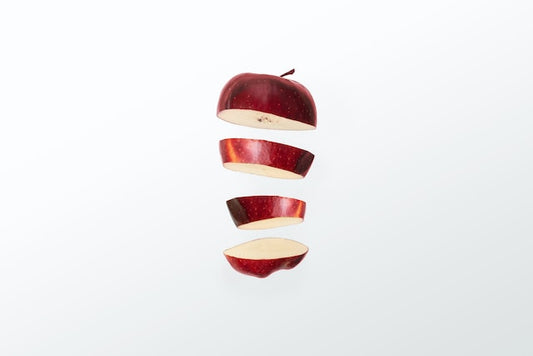
3 Delicious Apple-Flavored Recipes to Try Today
Apples are a classic fruit that have been enjoyed in many forms for centuries. From pies to sauces, apple-based dishes have a place in many cuisines worldwide. But why stop...
3 Delicious Apple-Flavored Recipes to Try Today
Apples are a classic fruit that have been enjoyed in many forms...
Top Recipes for Water Flavoring Drops:
-
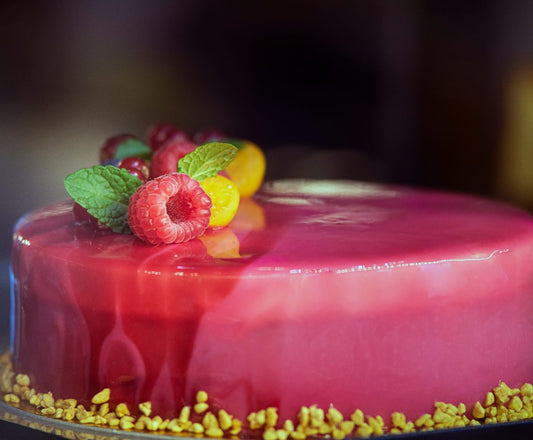
Enhancing Sweet Delights: Best Cake Flavoring I...
When it comes to creating delectable cakes, the flavor choices and filling combinations are key to elevating your sweet creations to new heights. Whether you're a seasoned baker or just...
Enhancing Sweet Delights: Best Cake Flavoring I...
When it comes to creating delectable cakes, the flavor choices and filling...
-
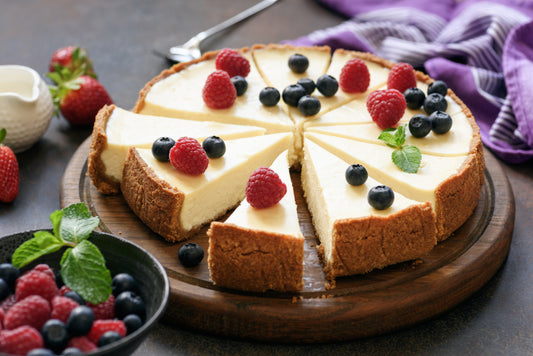
Indulge in the Creamiest, Dreamiest Cheesecake ...
Welcome to our guide on how to make the ultimate creamy and delicious cheesecake from scratch! What makes this cheesecake recipe truly special? Our Dolce Foglia Cheesecake Flavoring adds a...
Indulge in the Creamiest, Dreamiest Cheesecake ...
Welcome to our guide on how to make the ultimate creamy and...


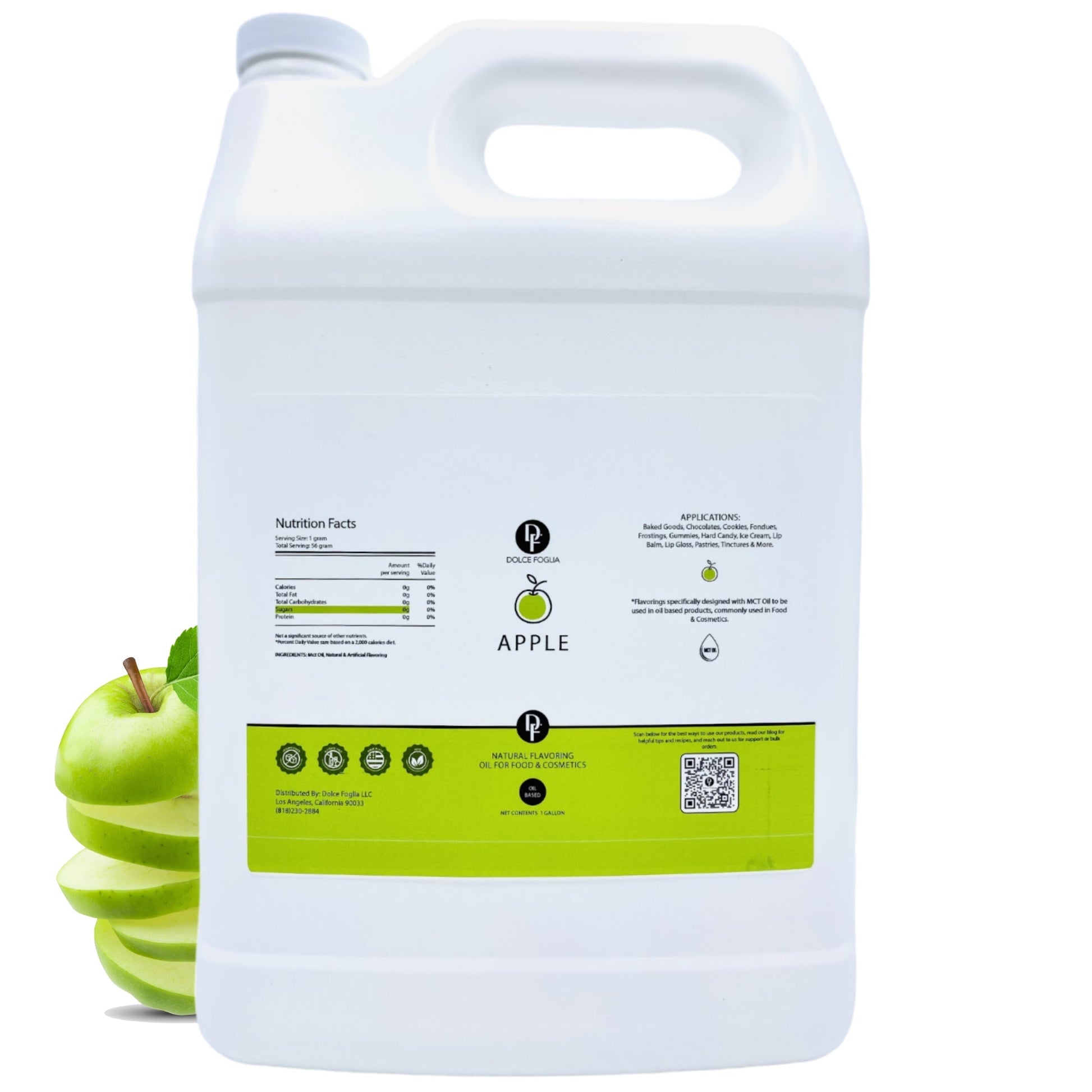
Dolcefogliaflavors
Oil Soluble Apple Flavoring
Share
